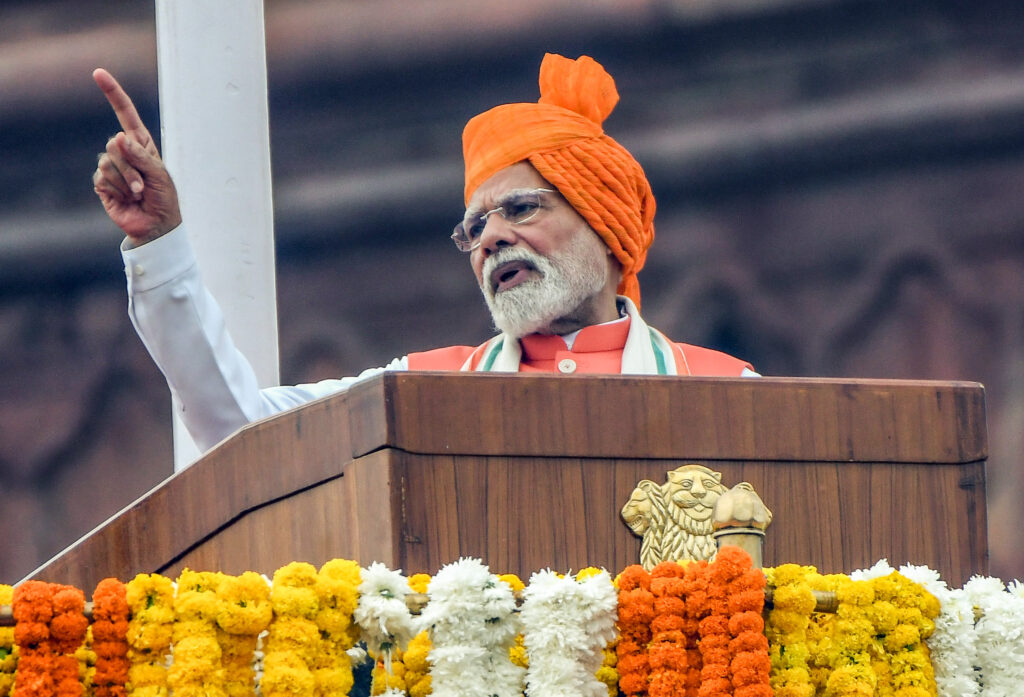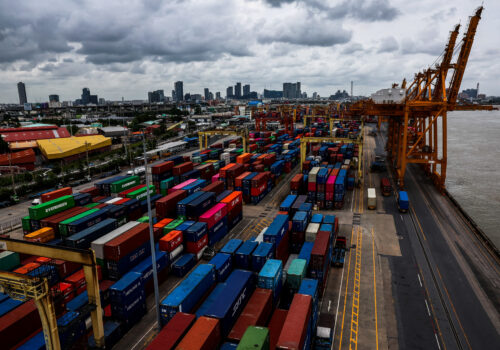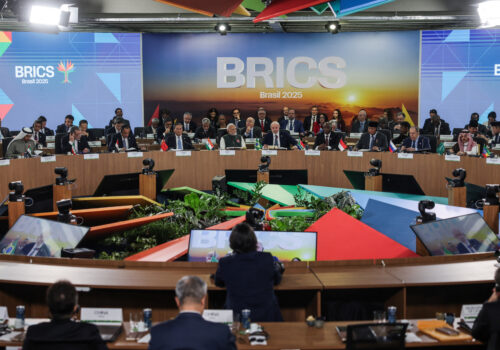Economic self-reliance has been on New Delhi’s agenda for years, in part as a response to India’s concerns about overdependence on China. But self-reliance has gained fresh momentum after the United States imposed 25 percent tariffs on most Indian goods and threatened to increase those levies to 50 percent if India doesn’t stop importing Russian oil.
Indian Prime Minister Narendra Modi again invoked the concept of a “self-reliant India” (Atmanirbhar Bharat) during a speech marking India’s Independence Day on August 15. Modi’s address provided a crucial window into the Indian government’s thinking and potential responses to these external pressures.
In India, the economic pressure and accompanying rhetoric from Washington are lending fresh impetus to skeptics of the United States and the West. This is reducing New Delhi’s political space to make even some of the additional trade concessions US President Donald Trump is demanding. In fact, US actions are increasing political pressure on Indian policymakers to “stand like a wall,” as Modi put it in his speech, to protect sensitive domestic interests, including in the agriculture and dairy sectors, which impact millions of small-holding farmers and livestock holders.
In the speech, Modi called for self-reliance in a wide range of sectors, such as technology (including social media), semiconductors, defense (including jet engines and a new initiative for national security across domains), energy (including nuclear energy and green hydrogen), electric vehicles, critical minerals, space tech, biopharmaceuticals, and fertilizers. This call reflects New Delhi’s cognizance of certain areas of economic and strategic overdependence on other countries, and that this overdependence risks being leveraged against India to the detriment of its progress toward industrialization, economic growth, and foreign policy goals.
Varying interpretations of self-reliance could result in different, and sometimes contradictory, policies across ministries and departments.
The risks of economic overdependence on China were again made starkly evident by Beijing’s measures since at least early 2025 to curtail India’s manufacturing industries. These measures included Beijing curtailing the movement of high-tech machinery and engineers needed to expand India’s burgeoning electronics, solar panel, and electric vehicle manufacturing industries, as well as China’s export bans on rare-earth minerals, which went into effect in April.
But New Delhi may now be concerned about the current levels of exposure to the United States, as well. The United States has been India’s largest trade partner for the last four years in a row. The United States is also a major source of capital and a key technology and strategic partner for India. But New Delhi’s geopolitical and geoeconomic calculus may now have to evolve given the rhetoric from Washington in addition to steep US tariffs and threats of even higher levies.
Hence the renewed emphasis on self-reliance. However, as in 2020—when the Indian government first introduced the concept of a “self-reliant India”—the question now is how Modi’s clarion call will translate into changes in the country’s industrial and trade policies.
Some policymakers might interpret “self-reliance” to mean “self-sufficiency,” which would mean achieving total economic independence by relying solely on domestic sources. This could lead to measures to curb imports—even of vital inputs for India’s growing manufacturing footprint—and to further favor domestic supplies over imported ones. This interpretation of self-reliance may or may not translate into favoring domestic brands over foreign ones; both could still be given a level playing field as long as they manufacture or otherwise invest in India.
Other policymakers might understand “self-reliance” to mean increasing India’s resilience to external shocks from a single or even two or three sources by diversifying its trade partners and increasing its domestic capabilities. The latter would emphasize investments in the domestic technology, manufacturing, and energy sectors, reflecting Modi’s “vocal for local,” call to promote demand for domestic goods and services in the wake of US tariffs. However, this line of thinking would also prioritize measures to increase India’s footprint in global trade, including by securing more trade agreements (including potentially with the European Union), building on recent deals with the United Arab Emirates, Australia, the European Free Trade Association, and the United Kingdom. This approach would allow for relatively more open and stable industrial and trade policies, as well as an enhanced focus on domestic reforms. To this end, Modi announced the creation of a “task force for next-generation reforms.”
The varying interpretations of “self-reliance” and India’s evolving response to recent developments create uncertainties about the policy implications of Modi’s speech. Varying interpretations of self-reliance could result in different, and sometimes contradictory, policies across ministries and departments, as is often the case in large and complex governments. In this highly uncertain trade and economic environment, businesses and other interested parties will need to closely track developments in government policy, understand the granular details and implications, and adapt and engage accordingly.
Gopal Nadadur is a New Delhi-based nonresident senior fellow at the Atlantic Council focusing on India and a senior vice president for South Asia at The Asia Group.
Further reading
Wed, Aug 6, 2025
US-India trade relations are getting worse. Quality control orders can be part of a reset.
New Atlanticist By Gopal Nadadur
While ostensibly targeted mainly at Chinese dumping, quality control orders often cause “collateral damage” by impacting imports from other economies.
Fri, Aug 1, 2025
What to watch as Trump ratchets up global tariffs
Fast Thinking By
US President Donald Trump will raise tariffs on nearly every US trading partner. Atlantic Council experts take stock of what this means for the global economy.
Tue, Jul 8, 2025
What really came out of this year’s BRICS summit?
New Atlanticist By Valentina Sader, Ignacio Albe
Russia’s and China’s presidents were absent. But there were nonetheless several notable outcomes from the recent BRICS summit in Brazil.
Image: New Delhi, Aug 15 (ANI): Prime Minister Narendra Modi addresses the nation from the ramparts of Red Fort on 79th Independence Day, in New Delhi on Friday. (ANI Photo/Rahul Singh)No Use India.




